The details tell the story
Posted on May 31, 2024
Source: Farm Progress. The original article is posted here.

When my daughter was four years old, she would spend Fridays with me. One of those days we fed cattle in the morning, and I just stopped and observed the cattle. At her age she quickly became impatient and asked what I was doing. I pointed out a black baldie heifer that was standing with her head through the neck rail but was not eating even though she did not appear to be sick.
Later that morning we got her out and gave her a probiotic, that at the time cost around sixty cents. At the evening feeding she was up at the bunk eating with her pen mates. I explained to my daughter that sometimes you need to take just a moment to look at what it is you are looking at. We got her right with a cheap fix that morning, yet I have no doubt if we missed her that day, we would have had to give her some much more expensive drugs the next day.
We caught one of those leading indicators I wrote about a while back. This week I had some windshield time and couldn’t help but ponder if I was observing some other leading indicators.
Hay prices
Due to the drought that had gripped most of the country, hay prices have been high. I would think it would be hard to miss all the rye bales, and rye that was chopped for silage in our local area. I also noticed that the first cutting of alfalfa didn’t appear to yield much, and a lot of it has been put up as haylage or baleage. This is a leading indicator that there will not be much first cutting alfalfa for sale.
Pay attention to other people’s problems when they talk about them. This way those problems do not become your own problems. I overheard a guy telling his buddies that he had a contract to sell hay to a feed yard. The problem is the feed yard hasn’t been buying any cattle and they told this guy that since they haven’t had any cattle coming in, they don’t need his hay.
What I am wondering is if this is a leading indicator that we will have an overabundance of hay supply later this year, and what will that do to the hay market? We know cattle numbers are down.
Heifer numbers
Speaking of cattle numbers, we know that many producers didn’t sell their heifers. This week the one sale I went to was probably 80% heifers, and every market report I looked at from this week consisted of mostly heifers. It was a short trading week and the runs were a bit on the thin side. While it is assumed that a bull was turned in with the heifers that were kept at the ranch, we do not know that for certain. What we do know is that the heifers that were sold this week went to feed yards and now are in the pipeline to go to the terminus.
Social media is covered up with posts about super high prices being paid for cattle in states like Nebraska, South Dakota, and Kansas. Let’s pay closer attention to what we are looking at.
The details in the market
The Value of Gain (VOG) in the plains states was like a yo-yo. On one weight bracket it was well above the Cost of Gain (COG). The next weight bracket the VOG dropped far below the COG. Then in the next weight bracket it was back above the COG again. There was also an abundance of leapfrogs in the spectrum.
A leapfrog is when a lighter wight animal brings more dollars per head than a heavier animal. At one sale five weight steers brough $81 per head more than six weight steers. At another sale seven weight heifers brought more dollars per head than eight weight heifers. And yet at another sale six weights brought $7 per head more than eight weights.
Here’s my point, I don’t care what the price is if it is costing more to feed the weight on than what that weight gain is worth. Some of these fire emojis people are using on their posts have got to be from the buyers, celebrating being subsidized from the under-valued gain.
No cattle = no hay
This sets the stage for some handsome replacement buys against fats. That takes me back to the Kansas feed yard that isn’t buying cattle so they can’t buy that guy’s hay. The feed yard thinks there aren’t any cattle that will work and be profitable. I just proved one of two things. They are only willing to buy cattle they want to buy, the ones that are pleasing to them in some way. Or they lack marketing skills because there are plenty that will work and be profitable.
Why isn’t anyone using those fire emojis for the southern markets? The VOG there is well above the COG for every weight class. If we examine the entire spectrum of steers the VOG was from $1.60 to $1.80 in southern states. In the plains states it was $1.06 to $1.36.
The opinions of Doug Ferguson are not necessarily those of beefproducer.com, beefmagazine.com or Farm Progress.




